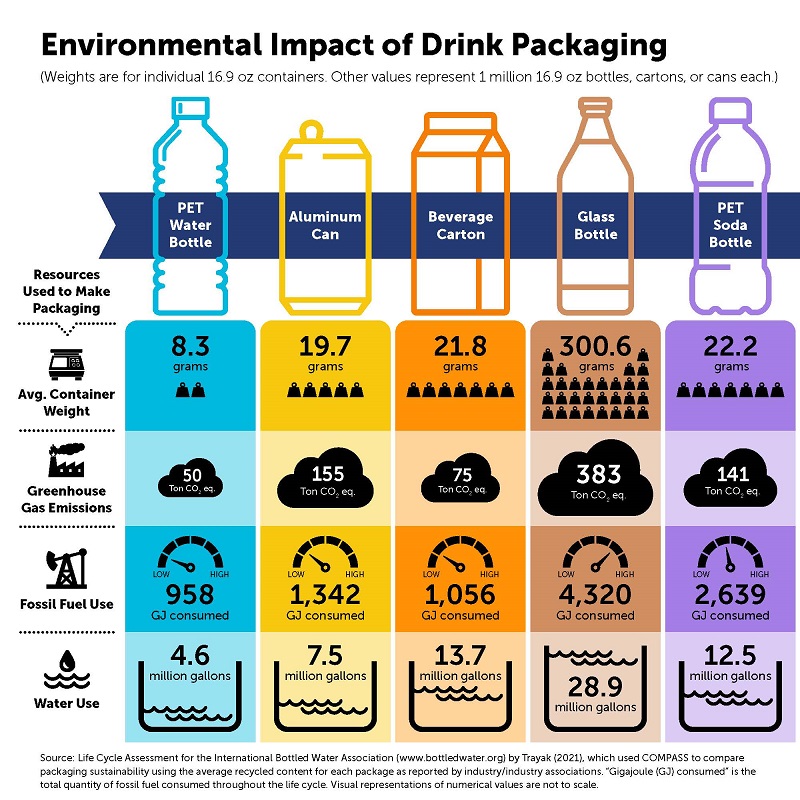A study conducted by Trayak LLC, a packaging design and manufacturing consultancy based in the USA, has highlighted that the most sustainable option for packaged water is the 500 ml PET bottle.
Using its independent and science-based software platform and Comparative Packaging Assessment (COMPASS) methodology, it conducted a life cycle assessment (LCA) of five different industry average packaging formats – the polyethylene terephthalate (PET) water bottle, a PET soda bottle, an aluminum can, a beverage carton and a glass bottle.
According to the report (read the executive summary here), the packaging systems were analysed according to seven different environmental impact categories, and a detailed breakdown provided for fossil fuel usage, GHG emissions, and water usage.
The infographic below puts the Trayak’s findings into perspective.
The study was commissioned by the USA’s International Bottled Water Association (IBWA).
Critical to its engagement with Trayak was collecting data for all of the packaging formats and establishing a reliable standard structure and packaging system for each. Within the LCA, the materials and processes were able to be modelled with industry average data from the ecoinvent database.
This is the world’s leading LCI database delivering transparency and consistency. It provides well documented process data for thousands of products, helping companies and individuals make truly informed choices about their environmental impact.
Importantly, too, the study considered the likelihood that each packaging type and material format will be recycled, landfilled, or incinerated based on the current infrastructure in the USA.
After reading the survey, South African Bottled Water Association CEO, Charlotte Metcalf, said that the LCA results of the comparison between the five industry average water containers shows the PET water bottle as the least environmentally impactful option, and therefore the preferred container for packaged water.
“The 500 ml PET water bottle produces the lowest environmental impact across the seven indicators measured, including fossil fuel use, greenhouse gas (GHG) emissions, and water use, she said.
“The beverage carton was the second least impactful package across many of the seven indicators. However, in South Africa, we must consider that the recycling stream for this type of container is very limited. Most beverage cartons end up in our landfills because there are very few recycling plants with the technology to recycle them.
“The glass bottle, which is an increasingly less used format in South Africa, was the most environmentally impactful container within this LCA study across six of the seven indicators calculated.
“While we haven’t replicated this study in South Africa, we have no reason to believe the outcome would be any different.
“Our message to South African consumers is clear – Water, in all its forms, is a vital component of our diet, as well as the healthiest beverage option for societies plagued by diseases such as obesity and diabetes.
“Bottled water also is the best packaged beverage option for the environment; it has the lightest environmental footprint of all packaged beverages.
“And, like other containers – plastic or otherwise – you use every day in your home, bottled water bottles are reusable and recyclable – they are not single-use products. Importantly, by recycling them after reusing them, you reduce their environmental footprint by 25%. That, too, is a major step in the right direction to reducing plastic waste. People, everywhere, just have to change their behaviour and take that step,” Metcalf said.
Ends
Issued on behalf of SANBWA – Charlotte Metcalf – CEO – https://www.sanbwa.org.za/
